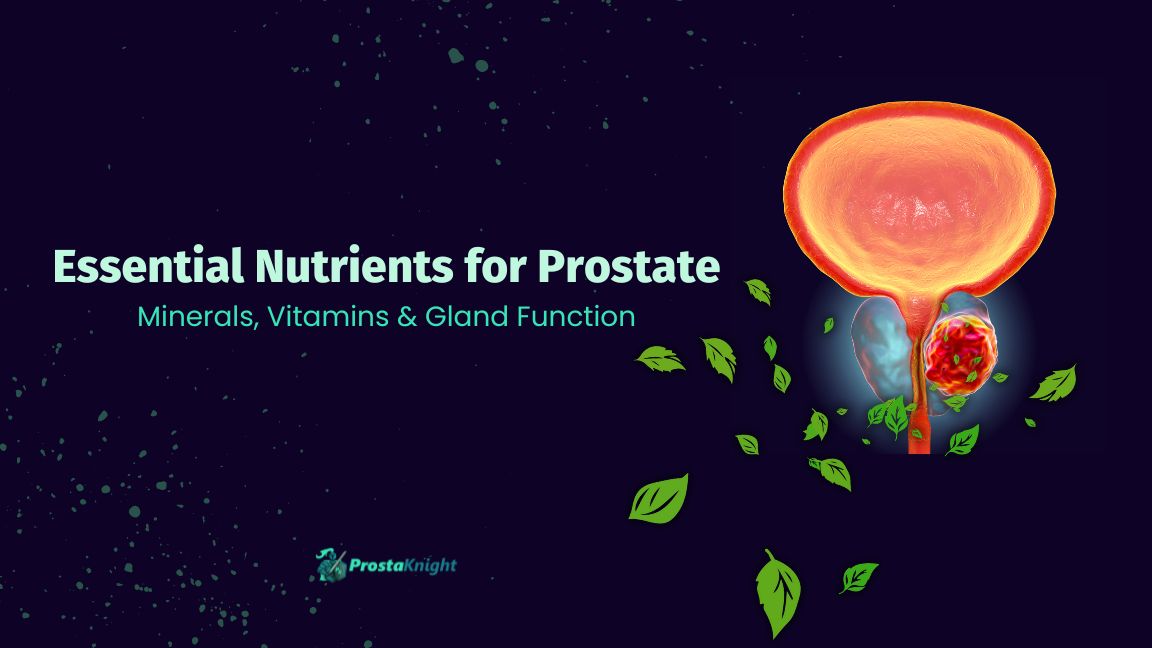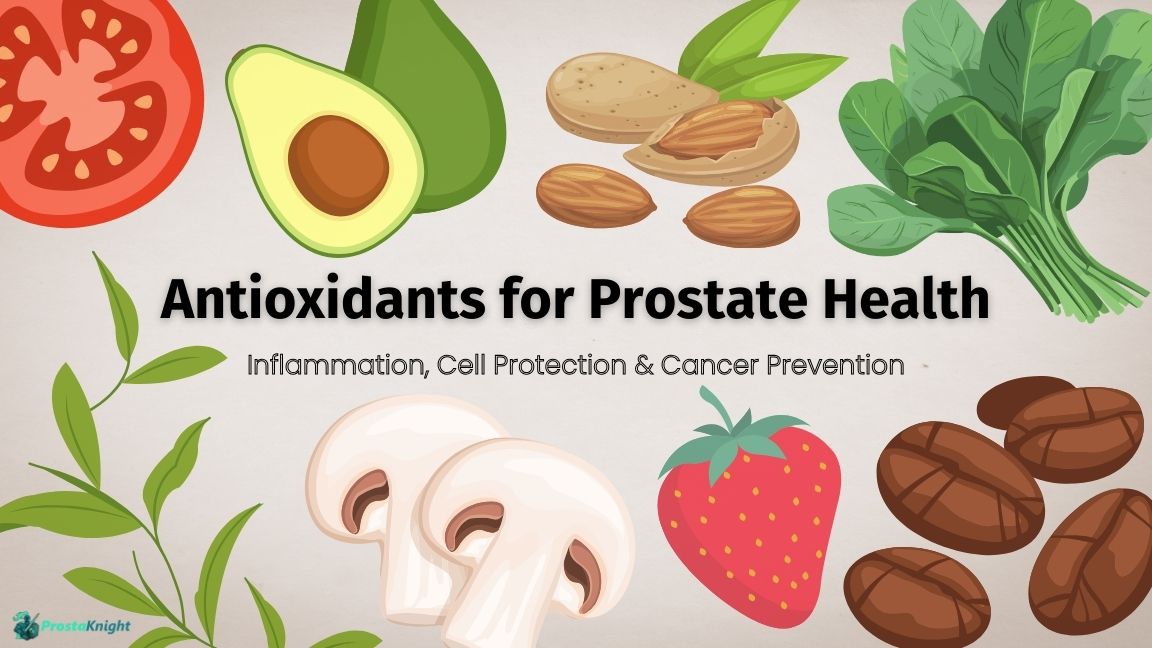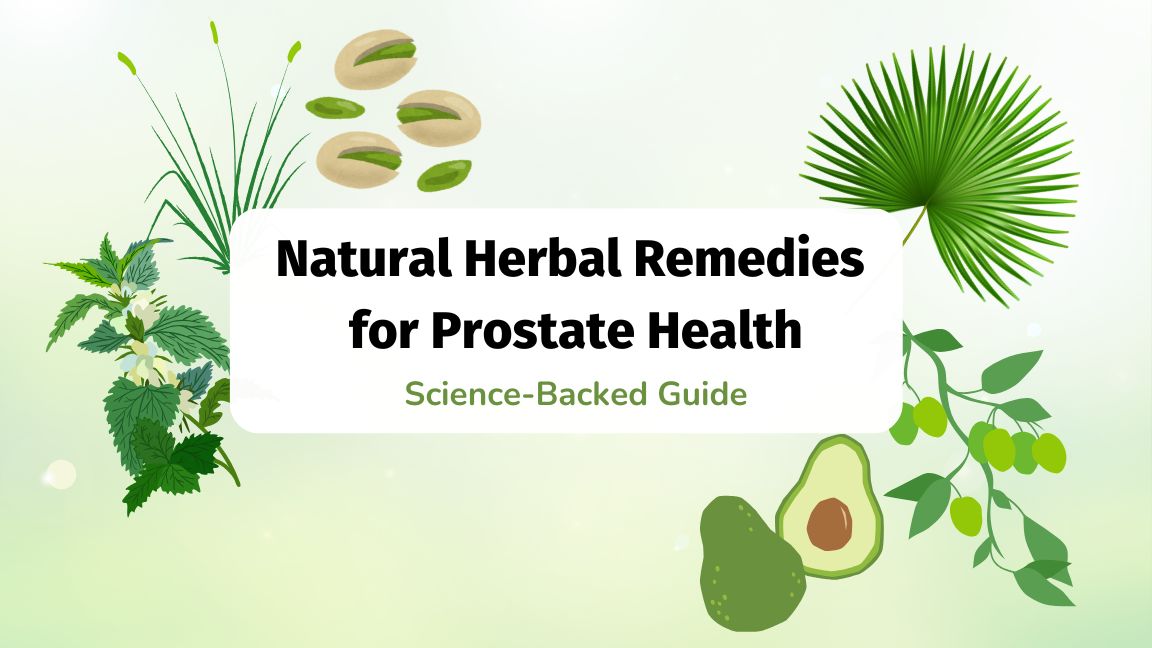Prostate Wisdom Digest
- Prostate health isn’t just an “old man’s game” – it’s crucial for every guy, starting now.
- Diet, exercise, and stress management are your secret weapons for a happy, healthy prostate.
- Don’t let embarrassment stop you from getting checked – those exams could save your life.
- Taking charge of your prostate health today means a better quality of life tomorrow.
The Prostate Chronicles: What Every Man Needs to Know
Ever wondered why that tiny gland below your bladder gets so much attention?
Or why your doctor keeps nagging you about prostate check-ups?
Well, gents – we’re about to learn some interesting things about prostate health, and trust me, it’s more exciting than you might think!
About 1 in 8 men will be diagnosed with prostate cancer in their lifetime? Yikes! But don’t panic just yet.
I’m here to guide you through the ins and outs of prostate health, from prevention to advanced care.
I remember when I first heard the word “prostate.” I was in my 30s, feeling invincible, and thought it was something only old guys had to worry about. Boy, was I wrong!
Fast forward a couple of decades, and here I am, passionate about sharing everything I’ve learned about keeping this walnut-sized wonder in tip-top shape.
This isn’t just another dry medical article. We’re going to chat about everything from what the heck a prostate actually does (spoiler: it’s pretty important) to how to keep it happy with the right foods and exercises.
We’ll tackle the tough stuff too – screenings, treatments, and yeah, even that dreaded digital rectal exam. Don’t worry, I’ll throw in some humor to keep things light!
Key Points:
| Prevention is Key | A prostate-friendly lifestyle, including a balanced diet and regular exercise, can significantly reduce your risk of prostate issues. |
| Early Detection Matters | Regular screenings, including PSA tests and digital rectal exams, are crucial for catching potential problems early. |
| Treatment Options Abound | From watchful waiting to advanced therapies, there’s a range of treatments available for various prostate conditions. |
| Holistic Approach Wins | Prostate health impacts your overall well-being, including mental health and relationships, so a comprehensive approach is essential. |
Now, you might be wondering why you should trust me on this journey through the prostate jungle. Well, those very close to my family have been there, done that, and we’ve seen the recoveries.
But more than that, I’ve got a crack team backing me up.
With my background in Biology, Chemistry, and Physics from top-notch universities, I’ve got the science down pat. But it’s not just about the book smarts.
I’ve made it my mission to dig deep into the latest research, always on the lookout for new, natural ways to keep our prostates (and the rest of us) healthy and happy.
And I’m not alone in this quest. Tia, our whiz at breaking down complex science into bite-sized nuggets, and Zeb, our eagle-eyed fact-checker, are here to make sure you’re getting the most accurate, up-to-date info out there.
So, ready to become a prostate pro? Let’s dive in and unlock the secrets to better health, one prostate fact at a time!
Table of Prostate Health by the Numbers:
| Statistic | Value | Source |
|---|---|---|
| Lifetime risk of prostate cancer | 1 in 8 men | American Cancer Society, 2021 |
| 5-year survival rate for localized prostate cancer | 100% | National Cancer Institute, 2020 |
| Percentage of men over 50 with BPH symptoms | 50% | Urology Care Foundation, 2021 |
| Average age at prostate cancer diagnosis | 66 years | American Cancer Society, 2021 |
| Percentage of prostate cancers found in early stage | 77% | American Cancer Society, 2021 |
Table of Contents
- 1. Your Prostate: The Basics Every Man Should Know
- 2. The Pillars of Prostate Health
- 3. Risk Factors That Affect Prostate Health
- 4. Prostate Problems: What Can Go Wrong?
- 5. Screening and Diagnosis: Staying Ahead of the Game
- 6. Treatment Options: Conservative to Cutting-Edge
- 7. Living with Prostate Conditions: Quality of Life Matters
- 8. The Pros of Prioritizing Prostate Health
- 9. The Cons of Neglecting Prostate Health
- The Prostate Pathway: Your Next Steps to Optimal Health
- Frequently Asked Questions
1. Your Prostate: The Basics Every Man Should Know
What is the Prostate, and What Does it Do?
Let’s talk about the unsung hero of the male reproductive system – the prostate. I remember when I first learned about this walnut-sized wonder, and boy, was I surprised by its importance!
The prostate is a gland that sits just below the bladder, wrapping around the urethra like a tiny donut. Its main job? Producing seminal fluid, which is crucial for healthy sperm and successful reproduction.
But that’s not all! This little gland also helps control urine flow and plays a role in sexual function. Talk about a multitasker!
The Anatomy of the Prostate Gland
Now, let’s get a bit more detailed about the anatomy. The prostate isn’t just a simple blob – it’s got zones, each with its own function:
- Peripheral zone: The largest part, where most prostate cancers develop
- Central zone: Surrounds the ejaculatory ducts
- Transition zone: The area that can enlarge with age, causing BPH
I like to think of it as a tiny city, with different neighborhoods each doing their part to keep things running smoothly.
How the Prostate Changes with Age
As we age, our prostates don’t stay the same. It’s like they hit a growth spurt in our later years!
In our 20s and 30s, the prostate is usually behaving itself. But once we hit our 40s and beyond, things can start to change. The prostate might begin to enlarge, a condition called benign prostatic hyperplasia (BPH).
I noticed this myself when I hit 50 – suddenly, those midnight bathroom trips became more frequent. It’s not cancer, but it can sure be annoying!
Common Myths About Prostate Health Debunked
There are so many myths floating around about prostate health. Let me bust a few for you:
Prostate Health Myths Debunked:
| Myth | Truth |
|---|---|
| Only old men need to worry about prostate health | While risk increases with age, younger men should be aware too |
| Frequent ejaculation causes prostate cancer | Some studies suggest it might actually be protective! |
| A high PSA always means cancer | PSA can be elevated for various reasons, not just cancer |
| Prostate problems always affect sexual function | Not necessarily – it depends on the condition and treatment |
Don’t ignore your prostate health just because you’re young or symptom-free. Regular check-ups and a healthy lifestyle can go a long way in preventing future issues.
Recommended Table:
| Prostate Zone | Location | Main Function | Common Issues |
|---|---|---|---|
| Peripheral Zone | Outer rear portion | Main site of fluid production | Most common area for prostate cancer |
| Central Zone | Surrounds ejaculatory ducts | Helps protect reproductive tract | Less common area for issues |
| Transition Zone | Surrounds the urethra | Involved in urinary control | Main site for benign growth (BPH) |
Think about this:
Your prostate health is a window into your overall well-being. By understanding and caring for this tiny gland, you're investing in your long-term health and quality of life.
2. The Pillars of Prostate Health
Nutrition: Foods your Prostate Loves (and those it doesn’t)
I’ve learned the hard way that what you put on your plate can make or break your prostate health.
After years of indulging in greasy burgers and sugary treats, my annual check-up was a wake-up call. Time to revamp my diet!
Prostate-friendly foods became my new best friends. I started loading up on:
- Tomatoes: Packed with lycopene, a powerful antioxidant
- Fatty fish: Rich in omega-3s that fight inflammation
- Berries: Bursting with antioxidants and vitamin C
- Green tea: Full of catechins that may slow prostate cancer growth
On the flip side, I had to bid farewell to some old favorites.
- Processed meats
- Excessive dairy,
- and too much red meat got the boot.
It wasn’t easy, but my prostate (and waistline) thanked me.
Exercise: Getting Moving for a Happy Prostate
Let’s face it, sitting on our butts all day isn’t doing our prostates any favors. I used to be a couch potato extraordinaire until I realized how much regular exercise can benefit prostate health.
I started small – a brisk walk around the block after dinner.
Gradually, I worked up to more intense workouts. Cardio exercises like jogging and cycling became my go-to for boosting blood flow and reducing inflammation. Still it is not for everybody nor everyone can do them.
But strength training, especially for the lower body, can be very helpful. Squats and lunges became my new best friends (even if my legs disagreed at first).
Stress Management: The Mind-Body Connection
Stress and prostate health? Yep, they’re connected. I learned this the hard way during a particularly stressful period at work.
My prostate symptoms flared up a tiny bit (that I noticed), and I realized I needed to get a handle on my stress levels.
I tried various techniques:
- Meditation: Started with just 5 minutes a day
- Deep breathing exercises: Great for quick stress relief
- Yoga: Surprised myself by actually enjoying it
Finding what works for you is key. For me, it was a combination of meditation and regular nature walks. The peace I found reflected in my overall health, prostate included.
Sleep: Why Catching Those Z’s Matters for Your Prostate
Sleep used to be my last priority. Late nights, early mornings – I thought I was being productive. Man, was I wrong. Lack of sleep can wreak havoc on your prostate health.
Quality sleep helps regulate hormones, reduces inflammation, and supports overall health. I made some changes:
- Stick to a regular sleep schedule
- Create a relaxing bedtime routine
- Keep the bedroom cool and dark
- Limit screen time before bed
The results? Better sleep, fewer nighttime bathroom trips, and a happier prostate.
My Advice:
“Don't wait for problems to start before you take action. Incorporating these lifestyle changes now can save you a world of trouble down the road. Your future self will thank you!”
Your prostate doesn’t exist in isolation. It’s part of a complex system that responds to how you treat your body as a whole.
Nurturing your overall health is the best gift you can give your prostate.
Table of Pillars of Health and its Benefits:
| Pillar of Health | Benefits for Prostate | Easy Ways to Implement |
|---|---|---|
| Nutrition | Reduces inflammation, supports cell health | Add 1 prostate-friendly food to each meal |
| Exercise | Improves blood flow, maintains healthy weight | Start with 15-min walks, 3 times a week |
| Stress Management | Reduces inflammation, balances hormones | Practice 5-min deep breathing daily |
| Sleep | Supports hormone regulation, cell repair | Set a consistent bedtime and stick to it |
Pros & Cons Table for Prioritizing Prostate Health:
| Pros of Prioritizing Prostate Health | Cons of Neglecting Prostate Health |
|---|---|
| Early detection of potential issues | Increased risk of serious conditions |
| Better treatment outcomes | More invasive treatments may be needed |
| Improved overall health | Negative impact on quality of life |
| Enhanced sexual function | Potential strain on relationships |
| Reduced anxiety about health | Higher long-term healthcare costs |
| Increased awareness of body | Missed opportunities for prevention |
| Potential for longer, healthier life | Risk of late-stage diagnosis |
3. Risk Factors That Affect Prostate Health
Age: Understanding how Risk Increases Over Time
Let me tell you, hitting the big 5-0 was an eye-opener for me. Suddenly, my doctor started talking more about prostate health than my cholesterol levels.
The truth is, age is the biggest risk factor for prostate issues. It’s like your prostate has its own biological clock, ticking away:
- 40s: Risk starts to climb, but still relatively low
- 50s: This is when things start getting real
- 60s and beyond: Your risk is significantly higher
I remember thinking, “But I feel fine!” That’s the tricky part – prostate problems often sneak up without symptoms. Regular check-ups become crucial as you age, even if you feel like a spring chicken.
The Genetic Link in Prostate Health
Family history plays a huge role in prostate health. If you’ve got a close relative (father, brother, uncle) who’s had prostate issues, your risk doubles.
And if multiple relatives are affected? Your risk can be 5 to 11 times higher.
But don’t panic! Knowledge is power. Knowing your family history means you can be proactive about screenings and lifestyle choices.
Race and Ethnicity
This one’s a bit sensitive, but it’s crucial to understand. Race and ethnicity significantly impact prostate health risk, and it’s not just about genetics.
African American men, for instance, have a higher risk of developing prostate cancer and at a younger age. They’re also more likely to have aggressive forms of the disease.
On the flip side, Asian American and Latino men generally have lower risk compared to white men.
But these risks can change when people move to different countries, suggesting lifestyle factors play a role too.
Lifestyle Choices that Help or Harm your Prostate
I used to think my lifestyle didn’t matter much for my prostate health. Was I wrong! Our daily habits can either be a shield or a weapon against prostate issues.
Here’s what I’ve learned:
- Diet: A diet high in red meat and dairy? Not great for your prostate. But load up on fruits, veggies, and fish, and you’re doing your prostate a favor.
- Exercise: Sitting all day is like kryptonite for your prostate. Regular physical activity can lower your risk of BPH and may even slow prostate cancer growth.
- Smoking: Yet another reason to quit. Smoking increases your risk of aggressive prostate cancer.
- Alcohol: Moderation is key. Excessive drinking can irritate your prostate and bladder.
Don’t wait for problems to start before you take action. Know your risk factors and start making prostate-friendly choices today.
It’s never too early (or too late) to start caring for your prostate health.
Think about this:
“Your prostate health isn't set in stone. While you can't change your age, race, or family history, you have the power to influence your prostate health through your daily choices.
Every healthy decision is a step towards a healthier prostate.”
4. Prostate Problems: What Can Go Wrong?
Benign Prostatic Hyperplasia (BPH)
I never thought I’d spend so much time thinking about the size of my prostate, but here we are.
BPH, or an enlarged prostate, is like that friend who overstays their welcome and takes up too much space.
When I hit my mid-50s, I started noticing some changes. Frequent trips to the bathroom, a weak urine stream, and the dreaded “stop-and-go” became my new normal.
At first, I brushed it off as just “getting older,” but my doctor set me straight.
BPH isn’t cancer, but it sure can be a pain in the… well, you know. The prostate grows and squeezes the urethra, making it harder to pee.
It’s super common – about half of men in their 50s have it, and up to 90% of men in their 80s are dealing with it.
The good news? There are treatments available, from medications to minimally invasive procedures.
Don’t suffer in silence like I did at first.
Prostatitis: Inflammation & Infection Explained
Prostatitis is the troublemaker of prostate problems. I ‘ve seen how my relative felt when a sudden onset of pelvic pain and burning during urination sent him rushing to the doctor.
There are actually four types of prostatitis:
- Acute bacterial prostatitis: Sudden onset, often with fever
- Chronic bacterial prostatitis: Recurring infection
- Chronic prostatitis/chronic pelvic pain syndrome: Most common type, cause often unknown
- Asymptomatic inflammatory prostatitis: No symptoms, often found during other tests
His case turned out to be acute bacterial prostatitis. A course of antibiotics knocked it out, but it was a rough couple of weeks.
The chronic types can be trickier to treat and may require a combination of medications and lifestyle changes.
The Big “C”
When my buddy got diagnosed with prostate cancer, it was a wake-up call for all of us.
It’s the second most common cancer in men worldwide, but here’s the good news – many men with prostate cancer don’t die from it.
Prostate cancer often grows slowly, and in many cases, it’s more about managing it than curing it. But don’t get complacent – aggressive forms do exist, and early detection is key.
Signs to watch for include:
- Difficulty urinating
- Blood in urine or semen
- Erectile dysfunction
- Bone pain (in advanced cases)
Remember, these symptoms can also be caused by other conditions. Don’t panic, but do get checked out – always seek professional medical advice
Other Less Common Prostate Conditions
While BPH, prostatitis, and cancer hog the spotlight, there are other prostate issues that don’t get as much attention:
- Prostatic intraepithelial neoplasia (PIN): Abnormal cells in the prostate, may increase cancer risk
- Prostate stones: Similar to kidney stones, can cause pain and infections
- Prostatic utricle cysts: Congenital cysts that may cause urinary issues
I had never heard of these until I went down a prostate health rabbit hole online. While they’re less common, they’re worth knowing about.
Your prostate may be small, but its impact on your quality of life can be huge. Understanding what can go wrong is the first step in keeping things right.
Table of Common Prostate Conditions at a Glance:
| Condition | Main Symptoms | Risk Factors | Common Treatments |
|---|---|---|---|
| BPH | Frequent urination, weak stream | Age, family history | Medications, minimally invasive procedures |
| Prostatitis | Pelvic pain, urinary issues, fever (in acute cases) | Varies by type | Antibiotics, anti-inflammatories, lifestyle changes |
| Prostate Cancer | Often asymptomatic early on; later: urinary issues, ED, bone pain | Age, race, family history | Active surveillance, surgery, radiation, hormone therapy |
| PIN | No symptoms, found during biopsy | Age | Monitoring, possible biopsy |
| Prostate Stones | Urinary issues, pelvic pain | Chronic inflammation | Removal if symptomatic |
My Advice:
“Don't ignore changes in your urinary habits or any discomfort in your pelvic area. Many prostate conditions are treatable, especially when caught early.
Regular check-ups and open communication with your doctor are your best defense.”
5. Screening and Diagnosis: Staying Ahead of the Game
The PSA Test: What it is & When you need it
PSA stands for Prostate-Specific Antigen. It’s a protein produced by the prostate, and the test measures its levels in your blood.
Sounds simple, right? Well, it’s not quite that straightforward.
Here’s the deal:
- Higher PSA levels can indicate prostate issues, including cancer
- But PSA can also be elevated due to non-cancerous conditions or even recent ejaculation
As for when you need it, that’s a bit of a gray area. Generally:
- Men 50-70 should discuss PSA testing with their doctor
- If you’re high risk (African American or family history), start the conversation at 45
I got my first PSA test at 50. It was just a simple blood draw, but man, the waiting for results felt like an eternity.
Digital Rectal Exam: It’s not fun, but it’s important
Okay, let’s talk about the rhino in the room – the digital rectal exam (DRE). Yeah, it’s exactly what it sounds like, and no, it’s not anyone’s idea of a good time.
I put off my first DRE for years. Big mistake. When I finally bit the bullet, it was over in less than a minute. Sure, it’s uncomfortable, but it’s not painful.
Here’s what happens:
- You’ll be asked to bend over or lie on your side
- The doctor inserts a gloved, lubricated finger into your rectum
- They feel for any abnormalities in the prostate
It’s quick, it’s important, and it can detect issues that PSA tests might miss. So don’t be like me – don’t put it off.
Advanced Diagnostic Techniques: MRIs, biopsies, and more
If your PSA is high or your DRE shows something funky, don’t panic. There are more advanced techniques to figure out what’s going on.
I had to go through this when my PSA came back elevated. First up was an MRI. It was like a space-age tube, but it gave a detailed picture of my prostate.
Then came the biopsy. I won’t sugarcoat it – it’s not pleasant. They take tiny samples of your prostate tissue to check for cancer cells. But it’s crucial for an accurate diagnosis.
Other techniques include:
- Transrectal ultrasound
- PET scans
- Genomic testing
Remember, these aren’t routine – they’re only used if there’s a reason for concern.
Controversy Surrounding Prostate Cancer Screening
Here’s where things get tricky. There’s a lot of debate about prostate cancer screening, especially PSA tests.
Why? Because it’s not perfect.
PSA tests can lead to:
- False positives: Causing unnecessary worry and procedures
- Overdiagnosis: Detecting cancers that may never cause problems
I’ve had friends go through invasive procedures only to find out they didn’t have cancer. On the flip side, I know guys whose lives were saved by early detection.
The current thinking is:
- No one-size-fits-all approach
- Discuss with your doctor about your individual risk and preferences
- Make an informed decision about when (or if) to start screening
Pros & Cons Table of Screening Methods
| Screening Method | Pros | Cons | Recommended Frequency |
|---|---|---|---|
| PSA Test | Non-invasive, can detect issues early | Can lead to false positives, over diagnosis | Discuss with doctor; typically annually for men 50-70 |
| Digital Rectal Exam | Can detect issues PSA might miss, quick | Uncomfortable, may miss small tumors | Usually annual, often done with PSA test |
| MRI | Detailed imaging, non-invasive | Expensive, may not detect all cancers | As needed based on other test results |
| Biopsy | Definitive diagnosis of cancer | Invasive, risk of complications | Only when suspicious results from other tests |
My Advice:
“Don't let fear or embarrassment keep you from getting checked. Have an open conversation with your doctor about your risk factors and the pros and cons of screening.”
6. Treatment Options: Conservative to Cutting-Edge
Watchful Waiting and Active Surveillance
When my doc first mentioned “watchful waiting,” I thought he was pulling my leg. Wait and do nothing? Seriously?
But I’ve learned it’s a legit approach for some prostate issues.
Watchful waiting is exactly what it sounds like – keeping an eye on things without immediate treatment. It’s often used for older guys or those with other health issues where the risks of treatment might outweigh the benefits.
Active surveillance is watchful waiting’s more proactive cousin. It involves regular check-ups, PSA tests, and biopsies to monitor the situation closely.
I’ve heard of people who’ve been on active surveillance for low-risk prostate cancer for years. But dodged more aggressive treatments while staying on top of there condition.
The key is knowing when to switch gears if things change. It’s not a set-it-and-forget-it deal.
Medications for Prostate Conditions
Pop a pill and solve your prostate problems? If only it were that simple. But medications can be a good old life-saver for many guys.
For BPH, there are a few options:
- Alpha-blockers: These bad boys relax the prostate muscles. I started on these and man, what a difference in my bathroom habits!
- 5-alpha reductase inhibitors: They actually shrink the prostate over time.
- Tadalafil: Yep, the same stuff used for ED can help with BPH too.
For prostatitis, antibiotics are the go-to if it’s bacterial. If it’s not, anti-inflammatories or alpha-blockers might help.
Prostate cancer meds are a whole other ballgame, from hormone therapy to chemotherapy. It’s not one-size-fits-all, that’s for sure.
Minimally Invasive Procedures
Sometimes meds aren’t enough, but you’re not quite ready for major surgery. That’s where minimally invasive procedures come in.
I heard some people are happy with TUMT (Transurethral Microwave Therapy) for BPH. They basically zap the prostate with microwaves to shrink it. Sounds sci-fi, right?
Other options include:
- TUNA (Transurethral Needle Ablation)
- Rezūm Water Vapor Therapy
- UroLift System
These procedures are usually outpatient, meaning you’re in and out the same day. Recovery time is typically shorter than with traditional surgery.
Surgery Options for Prostate Issues
When less invasive options don’t cut it, surgery might be the way to go. It’s not as scary as it sounds, especially with modern techniques.
For BPH, there’s TURP (Transurethral Resection of the Prostate). They go in through the urethra and shave off excess prostate tissue. No external cuts needed!
For prostate cancer, options include:
- Radical prostatectomy: Removing the whole prostate
- Robotic-assisted surgery: Like regular surgery, but with tiny robot hands (cool, right?)
Emerging Treatments and Clinical Trials
The future of prostate treatment is wild. We’re talking lasers, sound waves, and even gold nanoparticles!
Some cutting-edge treatments include:
- HIFU (High-Intensity Focused Ultrasound): Using sound waves to zap cancer cells
- Focal therapy: Treating only the cancerous part of the prostate
- Proton beam therapy: Super-precise radiation with fewer side effects
And don’t forget about clinical trials. They’re not just for guinea pigs – they can be a way to access tomorrow’s treatments today. Always talk to your doc about what’s available.
Pros & Cons Table of Treatment Type:
| Treatment Type | Best For | Pros | Cons |
|---|---|---|---|
| Watchful Waiting / Active Surveillance | Low-risk, slow-growing conditions | Avoids unnecessary treatment | Requires regular monitoring, potential for anxiety |
| Medications | BPH, some cases of prostatitis and prostate cancer | Non-invasive, can be very effective | Potential side effects, ongoing cost |
| Minimally Invasive Procedures | Moderate BPH, some early-stage cancers | Outpatient, quicker recovery | May not be as effective as surgery for severe cases |
| Surgery | Severe BPH, many cases of prostate cancer | Can be curative, long-lasting results | Invasive, risk of side effects like incontinence and ED |
| Emerging Treatments | Varies, often for cases where standard treatments haven’t worked | Potentially fewer side effects, highly targeted | May be experimental, not always covered by insurance |
7. Living with Prostate Conditions: Quality of Life Matters
Managing Symptoms and Side Effects
Managing symptoms be my new part-time job. For BPH, I learned some tricks:
- Avoiding fluids before bedtime
- Double-voiding (peeing, waiting a minute, then peeing again)
- Kegel exercises to strengthen pelvic muscles
For guys dealing with prostate cancer treatment, side effects can be more severe. Fatigue, hot flashes from hormone therapy, or bowel issues from radiation – it’s a lot to handle.
The key is open communication with your healthcare team. Don’t suffer in silence!
Sexual Health and Prostate Conditions
Prostate issues and treatments can throw a wrench in your sex life, and it’s not always easy to discuss.
Erectile dysfunction (ED) is a common issue, whether from BPH, prostatitis, or cancer treatments.
But here’s what I learned – it’s not the end of the world, and there are solutions.
Options include:
- Medications like Viagra or Cialis
- Vacuum erection devices (sounds weird, but they work!)
- Penile implants for more severe cases
Don’t forget about other aspects of sexual health. Some guys experience changes in orgasm or fertility. It’s crucial to have honest conversations with your partner and your doctor.
Emotional and Psychological Support
Here’s something they don’t always tell you – prostate issues can mess with your head as much as your body.
I went through a rough patch after my diagnosis. Anxiety, depression, fear – it all hit me like a ton of bricks.
It’s normal to feel overwhelmed, angry, or scared. But don’t let those feelings isolate you. Seeking help isn’t a sign of weakness; it’s a smart move for your overall health.
Some strategies that helped me:
- Talking to a therapist who specializes in men’s health issues
- Mindfulness and meditation to manage stress
- Staying active and social, even when I didn’t feel like it
Remember, taking care of your mental health is just as important as managing physical symptoms.
Support Groups and Resources
You know what they say – no man is an island. That’s especially true when dealing with prostate issues. Joining a support group can really help.
Don’t forget about resources for caregivers too. Wives may find great comfort in connecting with other partners of prostate cancer patients.
Some great resources to check out:
- Us TOO International Prostate Cancer Education & Support Network
- Prostate Cancer Foundation
- American Cancer Society’s Cancer Survivors Network
Don’t try to be a lone wolf. Reach out, connect, and lean on others who understand your journey. And remember, it’s okay to have bad days – just don’t let them become bad weeks or months.
Recommended Table:
| Aspect of Living with Prostate Conditions | Common Challenges | Coping Strategies | Resources |
|---|---|---|---|
| Symptom Management | Urinary issues, pain, fatigue | Lifestyle adjustments, medications, pelvic floor exercises | Urologist, Pelvic floor physiotherapist |
| Sexual Health | Erectile dysfunction, changes in libido | Medical treatments, open communication with partner | Sexual health counselor, Urologist |
| Emotional Wellbeing | Anxiety, depression, fear | Therapy, mindfulness, stress management techniques | Mental health professional, Support groups |
| Relationship Impact | Communication issues, role changes | Couples counseling, open dialogues, shared decision making | Relationship counselor, Support groups for partners |
| Practical Daily Living | Work challenges, financial strain | Workplace accommodations, financial counseling | Social worker, Patient advocate organizations |
8. The Pros of Prioritizing Prostate Health
Early Detection Leads to Better Outcomes
Early detection isn’t just about cancer, though. Catching BPH or prostatitis early can mean simpler treatments and less impact on your quality of life.
It’s like nipping a problem in the bud before it becomes a full-blown forest fire in your nether regions.
Prostate-friendly Lifestyle Changes
When I first started paying attention to my prostate health, I had no idea it would lead to a total health overhaul. But man, am I glad it did!
I started eating better – more veggies, less red meat. I dusted off my old running shoes and hit the pavement.
Before I knew it, I was sleeping better, had more energy, and even lost that stubborn belly fat I’d been carrying around since college.
The best part? These changes didn’t just help my prostate – they improved my overall health.
My blood pressure went down, my cholesterol levels improved, and I even kicked my stress-eating habit to the curb.
Enhanced Quality of Life
Taking care of your prostate can lead to:
- Better erectile function
- Improved libido
- More satisfying orgasms
A healthy prostate means fewer midnight trips to the bathroom, less discomfort, and more confidence in your day-to-day life.
I can’t tell you how liberating it is to sit through a whole movie without having to sprint to the restroom!
Peace of Mind & Reduced Anxiety
Once I started prioritizing my prostate health, that anxiety began to fade. Regular check-ups, a healthy lifestyle, and open communication with my doctor gave me a sense of control I never had before.
Don’t get me wrong, I still have concerns now and then. But they’re not the all-consuming worries they used to be.
I sleep better at night knowing I’m doing everything I can to keep my prostate happy and healthy.
My Advice:
“Don't wait for problems to start before you take action. Prioritizing your prostate health now can save you a world of trouble down the road.
Plus, the side effects of a healthy lifestyle? They're pretty darn good.”
Table of the Benefits of Prioritizing Prostate Health:
| Benefit of Prioritizing Prostate Health | Impact on Physical Health | Impact on Mental Health | Long-term Outcomes |
|---|---|---|---|
| Early Detection | Increased treatment options, better prognosis | Reduced anxiety about unknown health issues | Improved survival rates, less invasive treatments |
| Lifestyle Changes | Lower risk of BPH, prostatitis, and some cancers | Increased self-esteem, sense of control | Overall better health, reduced risk of other diseases |
| Enhanced Sexual Function | Improved erectile function, better libido | Increased confidence, better relationships | Maintained sexual activity into later years |
| Regular Check-ups | Catch issues before they become serious | Peace of mind, reduced health anxiety | Established relationship with healthcare providers |
9. The Cons of Neglecting Prostate Health
Increased Risk of Developing Serious Prostate Conditions
Many prostate conditions start off silent. By the time you notice something’s wrong, you might be dealing with:
- Advanced BPH that’s messing with your kidneys
- Chronic prostatitis that’s resistant to treatment
- Prostate cancer that’s spread beyond the prostate
Negative Impact on Quality of Life and Relationships
When you’re constantly worried about leaks or pain, it’s hard to get in the mood for anything.
And it’s not just romantic relationships. When you’re always scouting for the nearest bathroom or canceling plans because of discomfort, your social life can take a nosedive too.
Higher Healthcare Costs in the Long Run
Here’s something they don’t tell you in those Medicare brochures – neglecting your prostate health can be a real wallet-buster.
If someone is diagnosed with advanced prostate cancer, the bills will start to pile up:
- Multiple specialist visits
- Expensive scans and tests
- Surgery and hospital stays
- Ongoing treatments and medications
Don’t let fear, embarrassment, or a misguided sense of toughness keep you from taking care of your prostate. The costs of neglect – both financial and personal – are just too high.
Table Showing the Consequences of Neglecting Prostate Health:
| Consequence of Neglecting Prostate Health | Short-term Impact | Long-term Impact | Potential Costs |
|---|---|---|---|
| Increased Risk of Serious Conditions | Mild to moderate symptoms often ignored | Advanced disease, reduced treatment options | Higher medical bills, reduced quality of life |
| More Invasive Treatments | Temporary relief from ignoring symptoms | Major surgeries, intensive therapies | Longer recovery times, increased risk of complications |
| Impact on Relationships | Minor irritations, decreased intimacy | Strain on partnerships, social isolation | Potential relationship breakdowns, therapy costs |
| Higher Healthcare Costs | Saving money on check-ups and screenings | Expensive treatments for advanced conditions | Significantly higher medical expenses, potential loss of income |
Think about this:
“Your prostate health isn't just about you. It's about the people who care about you, who want you around and in good health for years to come.
Taking care of yourself is one of the most selfless things you can do.”
The Prostate Pathway: Your Next Steps to Optimal Health
Here’s the deal: your prostate might be small, but its impact on your life can be huge.
So, what’s the takeaway from all this? Well, it’s pretty simple: don’t ignore your prostate, fellas. It won’t thank you for the neglect, and neither will your bladder, your sex life, or your overall health.
Remember those scary stats about prostate cancer? 1 in 8 men, that’s no joke.
But here’s the good news: with early detection and the right lifestyle choices, you’ve got the power to stack the odds in your favor.
Start small. Maybe swap that burger for a salad once in a while. Take the stairs instead of the elevator. And for Pete’s sake, don’t skip those check-ups! Your future self will thank you.
And let’s not forget about the mental game. Prostate issues can mess with your head as much as your body.
Don’t be too proud to reach out for support. Whether it’s a chat with your doc, a heart-to-heart with your partner, or joining a support group – you don’t have to go it alone.
Look, I get it.
Talking about your prostate isn’t exactly cocktail party material. But neither is dealing with the consequences of ignoring it.
Take it from the people who learned the hard way – a little attention now can save you a world of trouble down the road.
So, what’s your next move?
aybe it’s scheduling that check-up you’ve been putting off. Or perhaps it’s having an honest conversation with your partner about your concerns.
Whatever it is, take that step. Your prostate (and the rest of you) will thank you for it.
Remember, gents: a healthy prostate isn’t just about avoiding problems – it’s about investing in your quality of life.
Here’s to healthy prostates and happy lives!
Frequently Asked Questions
What’s the big deal about prostate health?
Listen up, fellas! Your prostate might be small, but it’s a powerhouse when it comes to your overall health and quality of life.
I’ve seen too many guys ignore their prostate health until it’s too late, and trust me, you don’t want to go down that road.
This little gland plays a crucial role in everything from urinary function to sexual performance.
Neglecting it can lead to some serious issues like BPH, prostatitis, or even cancer. But here’s the good news: taking care of your prostate isn’t rocket science.
Why should I care about my prostate now?
I get it, you’re feeling fine and prostate issues seem like an “old man” problem. But prostate health isn’t just about avoiding cancer or dealing with frequent bathroom trips.
It’s about maintaining your quality of life, your sexual function, and even your peace of mind. Starting to care about your prostate now, regardless of your age, can set you up for a healthier, happier future.
Plus, early detection and prevention are your best weapons against serious prostate conditions.
How can I keep my prostate healthy?
Alright, here’s the game plan for a happy prostate: First, diet is key. Load up on fruits, veggies, and fish rich in omega-3s. Cut back on red meat and dairy – your prostate will thank you.
Next, get moving! Regular exercise, especially strength training, can work wonders.
Don’t forget about stress management and good sleep habits – they’re more important than you might think. And for your mate’s sake, don’t skip those regular check-ups with your doc!
What’s the deal with prostate exams?
I know, I know. The thought of a prostate exam isn’t exactly thrilling. But let me tell you, it’s not as bad as you’re imagining, and it could literally save your life.
There are two main types: the PSA blood test and the digital rectal exam (DRE). Yeah, the DRE isn’t a walk in the park, but it’s quick, and it can detect issues that the PSA test might miss.
Don’t let embarrassment keep you from potentially life-saving screenings.
What if I have prostate problems?
First things first, don’t panic! Prostate issues are common, and many are treatable, especially when caught early.
From medications to lifestyle changes to more advanced treatments, there are options.
The key is to work closely with your doctor to find the best approach for you.
And don’t forget about the mental and emotional aspects – reach out for support if you need it. Remember, you’re not alone in this journey.
How can I talk to my partner about prostate health?
Okay, this one can be a bit awkward, but communication is crucial. Start by being honest about your concerns and why prostate health matters to you.
Share what you’ve learned (maybe even show them this article!). Open, honest dialogue can strengthen your relationship and your health.
Ready to take charge of your prostate health?
It’s time to step up and show your prostate some love. Your future self will thank you.
But here’s the million-dollar question: are you willing to make your prostate health a priority, or are you going to roll the dice and hope for the best?



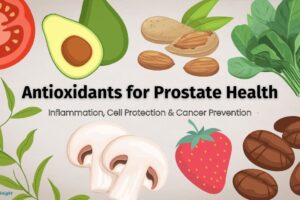
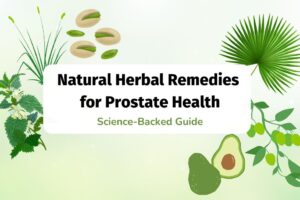
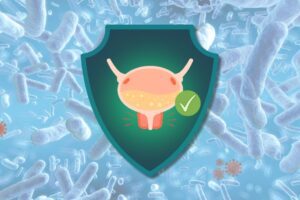
![Comprehensive Prostate Health: Essential Guide for Men [2024] Comprehensive Prostate Health Featured Image](https://prostaknight.com/wp-content/uploads/2024/09/Comprehensive-Prostate-Health-300x200.jpg)





